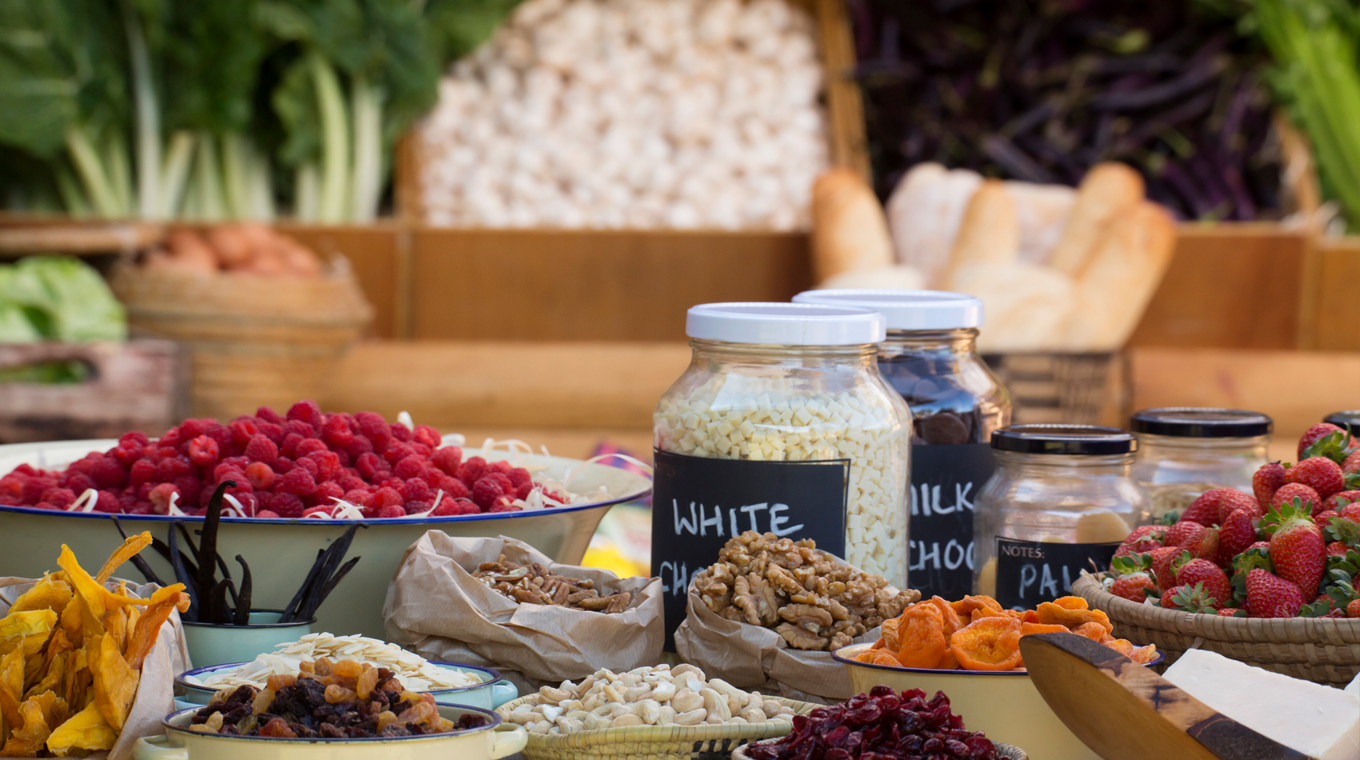
In this article
The COVID-19 pandemic has transformed our lives in more ways than we could have imagined a few months ago, and even mundane activities like grocery shopping and family meals have changed drastically. For many of us, lockdown and quarantine measures have turned home cooking into a necessity. Although, as of this writing, some states are lifting “shelter-at-home” regulations, many of us won’t be able to return to our pre-pandemic life of takeout and restaurants meals anytime soon.
What’s in your pantry?

A well-stocked pantry and freezer are lifesavers when it comes to preparing delicious and nutritious meals for your family, especially since the FDA recommends that you only grocery shop every two weeks. Stocking up on pantry staples means that you’ll never be at a loss when items are out of stock, you’re unable to get to the store, or grocery deliveries are unavailable. You’ll also be able to modify any recipe with the pantry staples you already have on hand. Even before the pandemic, savvy moms planned and prepped meals in advance to make their lives easier.
“The MOST important tip I can give you is to start — today — meal planning,” mom Sheri Silver previously told Mom.com. “The hour you spend each week drawing up a list of meals — and shopping for all but the most perishable ingredients — will save you so much time (and stress) when it comes time to make dinner.”
The Big List of essential pantry staples

Use the following list of pantry staples, adapted from The Food Network, as a rough guide. Your final choices will depend on your budget, your kitchen skills, and your family’s food preferences. Although the list looks massive, don’t be overwhelmed! You probably have many of these pantry staples already, and you don’t need to buy everything all at once. And if, for example, someone in your family is vegetarian, gluten-free, or has an allergy, you can shop accordingly.
Basics
Cooking oils, pepper, salt, vinegar
Baking
Baking powder, baking soda, flour, yeast, cocoa powder, chocolate chips, vanilla extract, cake or other baking mixes
Bread
Sandwich bread, tortillas, pita bread, hamburger buns, frozen doughs like pizza, biscuit, etc.
Canned Goods
Chicken and beef broth or bouillon cubes, canned and/or dried beans, canned vegetables, canned fruit, chilies, tomatoes, tomato paste, pasta sauce, canned fish and meat
Condiments
Jelly, ketchup, mayonnaise, mustard, pickles, hot sauce, Worcestershire sauce, soy sauce, Asian fish sauce, toasted sesame oil, barbecue sauce, salsa, olives, salad dressing
Dairy
Milk, creamer, yogurt, butter or margarine, cheese, eggs, ice cream, shelf-stable and non-dairy milk
Dried Herbs and Spices
Bay leaves, seasoned salt, cayenne pepper, chili powder, crushed red pepper, curry powder, granulated garlic and onion, cinnamon, pumpkin spice, cumin, ginger, oregano, paprika, smoked paprika, thyme, Italian seasoning, turmeric
Drinks
Coffee, tea, soft drinks, sparkling water, juice
Fruit and Veggies
Apples, avocados, bananas, bell peppers, broccoli, cabbage, cauliflower, carrots, celery, citrus, leafy greens, squash, lettuce, cilantro, parsley, scallions, garlic, sweet and white potatoes, onions, tomatoes, frozen fruits and vegetables
Meat and Fish
Ground beef and/or turkey, sausages, chicken, pork, bacon, vegan meat substitutes, frozen fish and/or shrimp
Prepared Food
Canned or boxed ready-to-prepare meals such as soup, mac and cheese, pilaf, etc., frozen meals and side dishes
Rice and Grains
White and/or brown rice, couscous, quinoa, pasta, noodles, polenta, breadcrumbs
Snacks and Cereals
Crackers, cookies, pretzels, popcorn, dried fruit, nuts, seeds, nut butter, breakfast cereal, oatmeal, chips
Sweeteners
Sugar, honey, maple syrup, artificial sweeteners
Should I worry about food shortages?

When we all began to shelter in place, bread exploded onto the quarantine scene. Everyone craved the comfort of home baking, and shortages of eggs, flour, and yeast were the result. More recently, you might have heard about or been affected by a meat shortage. Shutdowns of meatpacking plants caused by COVID-19 outbreaks and increased consumer demand have disrupted the food supply chain. Supermarkets in certain areas are limiting the amount of poultry, pork, and beef consumers can purchase. According to The Wall Street Journal, you’ll still be able to find meat, but at higher prices and a smaller selection.
When faced with these temporary shortages, it’s time to substitute, adapt, or try something new. “If certain meat items are scarce, now might be the time to try tofu, for instance, or other plant-based substitutes,” dietician Dana Hunnes told Healthline.
You can also try flexitarian or semi-vegetarian recipes that use less meat and rely on more vegetables and grains, like this Quick Bean and Turkey Italian Meatballs recipe from AllRecipes.







